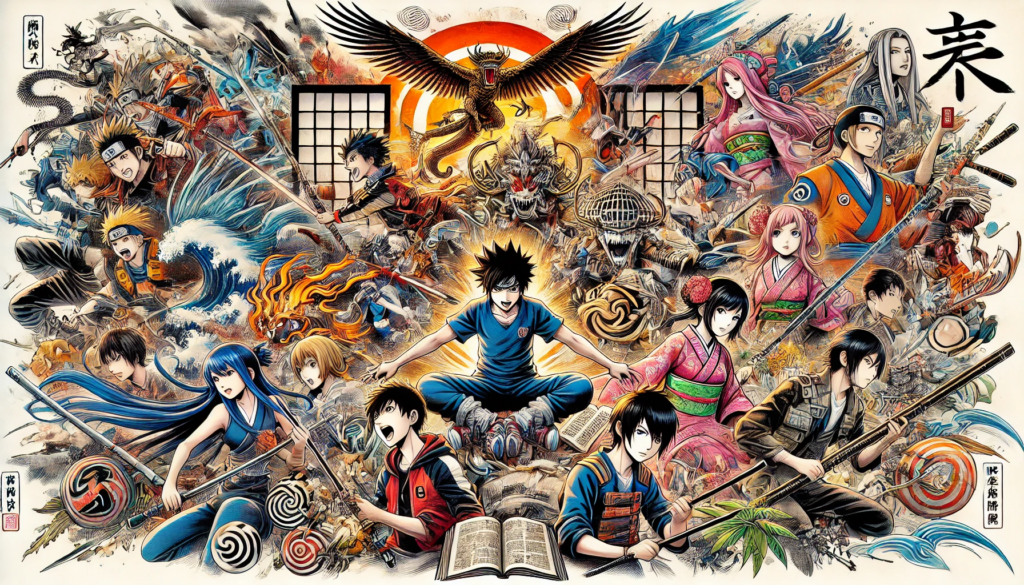
Japanese manga has long been a global phenomenon, captivating readers with its unique storytelling, artistic styles, and diverse genres. From its early origins in traditional Japanese art to becoming a multi-billion-dollar industry, manga has shaped pop culture worldwide. However, while manga remains incredibly popular, the industry has faced significant challenges that threaten its long-term stability.
Is Japanese manga in decline? What factors contribute to its struggles, and how does it compare to its golden age? Let’s explore the history, rise, and modern challenges of manga.
The Origins: The Birth of Manga
Manga has deep historical roots in Japan. Early forms of sequential storytelling can be traced back to the Heian period (794–1185), with illustrated scrolls like the Chōjū-giga (“Scrolls of Frolicking Animals”), which depicted humorous animal characters in motion—considered an early predecessor of manga.
During the Edo period (1603–1868), woodblock prints and illustrated books, such as those by Hokusai Katsushika, further refined manga’s artistic foundations. Hokusai even used the term manga to describe his sketchbooks, solidifying the word’s association with illustrated storytelling.
However, modern manga as we know it today truly began in the post-war era. Inspired by Western comics, such as Disney and American superhero comics, Osamu Tezuka, often called the “God of Manga,” revolutionized the industry in the late 1940s with works like Astro Boy (Tetsuwan Atom). His cinematic paneling style and deep storytelling set the standard for future generations.
The Golden Age of Manga (1960s–1990s): A Global Expansion
During the 1960s-1990s, manga exploded in popularity, becoming a dominant cultural force in Japan and beyond. This period saw the birth of legendary manga magazines, such as:
- Shōnen Jump (1968) – Home to Dragon Ball, One Piece, and Naruto
- Shōjo Beat & Margaret (1963) – Focused on romance, fantasy, and slice-of-life series
- Seinen & Josei manga – Targeted at older audiences with more mature themes (Akira, Berserk, and Ghost in the Shell)
The 1980s-1990s saw the rise of international manga fandom, thanks to anime adaptations like Sailor Moon, Pokémon, Dragon Ball Z, and Neon Genesis Evangelion, which introduced millions worldwide to Japanese storytelling. Manga sales soared in Japan and abroad, making it a multi-billion-dollar industry.
Modern-Day Manga: Success and Struggles (2000s–Present)
While manga remains a major industry today, several factors indicate potential decline and challenges:
- Declining Physical Sales – Japan’s manga market saw its peak in the mid-1990s, with sales declining in the 2000s due to the shift toward digital media and changing reading habits.
- Piracy and Free Online Content – Many readers access manga through illegal scans and unofficial websites, reducing profits for creators.
- Aging Demographics in Japan – While global fans are growing, the domestic Japanese audience is shrinking as fewer young readers buy manga magazines.
- Repetitive Storylines and Market Saturation – Many argue that modern manga lacks originality, with many series recycling tropes (isekai, power fantasy, and overused battle formulas).
- Crunch on Mangaka (Creators) – The demanding schedule and intense workload on artists have led to health issues and burnout. Iconic figures like Kentaro Miura (Berserk) and Akira Toriyama (Dragon Ball) passed away, raising concerns about sustainability in the industry.
- Rise of Webtoons and Digital Comics – Platforms like LINE Webtoon and Tapas are gaining ground with younger audiences due to their accessibility and vertical scrolling format, which suits mobile users.
The Future of Manga: Adaptation or Decline?
Despite these challenges, manga is not disappearing anytime soon, but it must evolve:
- Digital Manga Services: Official platforms like Shonen Jump+, Manga Plus, and ComiXology aim to provide legal, affordable access to manga.
- Diversity in Stories: New genres and themes, including more female-driven and LGBTQ+ stories, are gaining attention worldwide.
- AI and Technology: Some publishers are experimenting with AI-assisted manga creation to reduce the workload on artists.
- Stronger Copyright Protections: Japan is cracking down on manga piracy, shutting down illegal sites like Mangamura.
While traditional print manga may struggle, its digital future looks promising. The industry’s ability to adapt will determine whether it continues to thrive or fades into a niche market.
Conclusion: The Legacy of Manga
The history of Japanese manga is a testament to its creative power and global influence. From samurai-era illustrations to high-tech digital releases, manga has constantly evolved to capture the imaginations of millions.
Though it faces new hurdles, manga remains one of Japan’s greatest cultural exports, inspiring films, TV shows, and even Western comics. Whether in print or digital, manga’s storytelling magic ensures it will never truly disappear—only transform into something new.
Hashtags:
#Manga #Anime #Japan #MangaHistory #Otaku #ShonenJump #ShoujoManga #Seinen #Berserk #Naruto #OnePiece #DragonBall #OsamuTezuka #AkiraToriyama #Shonen #Shojo #MangaArt #Comics #MangaIndustry #KentaroMiura #Webtoons #DigitalComics #Isekai #MangaCulture #OtakuLife #MangaArtists #ShonenManga #AnimeManga #JapaneseCulture #MangaFuture #WeLoveManga